Enhancing Sleep Quality with CBD for Trauma Recovery
July 24, 2025
Key Differences in CBD Regulations: USA vs. EU
September 19, 2025Clinical Trials Involving Cannabidiol and Alzheimer’s Disease: A Therapeutic Overview
Alzheimer’s disease (AD) is a progressive neurodegenerative disorder marked by cognitive decline and memory loss, and it is the most common form of dementia affecting millions worldwide. Current treatments provide only limited symptomatic relief—for example, existing drugs like cholinesterase inhibitors and NMDA-receptor antagonists do not halt the underlying disease process. As a result, effective disease-modifying therapies remain elusive. However, recent clinical trials have begun exploring novel approaches, including cannabinoid-based therapies, with the goal of slowing or stopping AD progression. These investigational efforts reflect a growing hope that new interventions can be found to improve outcomes for patients and caregivers.
Cannabinoid-Based Therapies: An Evolving Research Landscape
Cognitive and Neuropsychiatric Effects of Cannabidiol and Alzheimer’s
One promising area of research focuses on compounds derived from Cannabis sativa, such as cannabidiol (CBD) and Δ⁹-tetrahydrocannabinol (THC). These cannabinoids are being evaluated for their potential to modulate neurochemical imbalances and reduce the neuroinflammation associated with AD. For instance, a recent Phase II clinical trial at the University of Colorado is examining whether a moderate dose of CBD (with and without a small amount of THC) can slow Alzheimer’s progression and improve cognitive function in individuals with mild cognitive impairment. This trial is comparing full-spectrum CBD (which contains <0.3% THC) against a THC-free CBD extract and placebo, tracking effects on biomarkers of AD, memory, and other outcomes over 24 weeks.
The rationale for such studies is supported by preclinical evidence—in a mouse model of familial AD, a short course of high-dose CBD restored the function of proteins that help clear beta-amyloid plaques and led to improved cognition. Similarly, emerging clinical data suggest potential benefits: an open-label study in 59 patients with AD found that a CBD-rich oil significantly reduced patients’ neuropsychiatric symptoms (such as anxiety and agitation) and also lessened caregiver distress over a 3-month period. Together, these findings have spurred considerable interest in cannabinoid-based therapies as a multi-faceted approach to treating Alzheimer’s.
Agitation Management in Clinical Settings
Managing behavioral symptoms of Alzheimer’s is another priority in clinical research, and here again cannabis-derived compounds are being tested. Agitation and aggression are common in moderate-to-severe AD and can be extremely challenging for caregivers. The CALM-IT trial (Cannabidiol Medication Intervention Trial) is a randomized, double-blind, placebo-controlled crossover study investigating whether CBD can safely and effectively reduce agitation in Alzheimer’s patients. In this trial, patients receive an oral, highly purified 99% CBD capsule or placebo in alternating phases, and investigators measure changes in agitation levels. In addition to clinical outcomes, CALM-IT is also collecting biological samples to identify novel biomarkers associated with agitation severity and treatment response. The goal is not only to see if CBD can calm agitation, but also to understand the biological signatures of agitation in AD and how they might predict or reflect a patient’s response to therapy.
Distinct Pathways in Cannabidiol and Alzheimer’s Research
Endocannabinoid System Modulation
The endocannabinoid system (ECS) is a cell-signaling network in the brain and body that helps maintain neural homeostasis. In Alzheimer’s disease, ECS dysregulation has been implicated in several pathological processes—particularly neuroinflammation and oxidative stress that contribute to neuronal damage. By modulating the ECS, researchers aim to restore balance in these processes. Cannabinoid-based therapies (like THC and CBD) interact with ECS receptors and enzymes in ways that could be neuroprotective.
Mechanism of Action
The ECS consists of two primary receptors, CB1 and CB2. CB1 receptors are abundant in the brain (especially in neurons) and help regulate neurotransmitter release, while CB2 receptors are found mostly on immune cells (including microglia in the central nervous system) and modulate inflammatory responses. Cannabinoids can influence both receptors to beneficial effect. THC is an agonist at CB1 (and CB2) receptors, meaning it can activate these receptors; CBD, while not a direct CB1 agonist, acts as a negative allosteric modulator of CB1 and a low-affinity agonist of CB2, among other mechanisms. By engaging these targets, cannabinoids have demonstrated several effects relevant to AD pathology. Notably, certain cannabinoids can protect neurons from β-amyloid’s toxic effects and reduce the hyperphosphorylation of tau protein—these two processes (Aβ toxicity and tau tangles) are key hallmarks of Alzheimer’s. Cannabinoids also appear to dampen β-amyloid–induced oxidative stress and neuroinflammation in the brain. For example, stimulating cannabinoid receptors on microglia (the brain’s immune cells) has been shown to reduce the release of inflammatory mediators and enhance the clearance of amyloid proteins. There is even evidence that THC can inhibit acetylcholinesterase, an enzyme that breaks down the neurotransmitter acetylcholine, thereby potentially improving cholinergic signaling and reducing amyloid formation. Such multi-faceted actions—reducing toxic protein buildup, calming inflammation, and supporting neurotransmission—suggest that ECS-targeted therapies could address the disease on several fronts at once. Preclinical studies lend support to this approach: enhancing the brain’s own endocannabinoids (for instance, by inhibiting their degrading enzymes FAAH or MAGL) reversed cognitive deficits in AD mouse models and mitigated amyloid-induced neuroinflammatory and oxidative damage. These mechanistic insights underscore why modulating the endocannabinoid system is an exciting pathway in AD research.
Pathway: Oral Cannabinoid Delivery and Pharmacokinetics in Aging Populations
While the ECS represents the biological target, the route of delivery and pharmacokinetics (PK) of cannabinoid treatments are equally important—especially in the context of elderly Alzheimer’s patients. This pathway explores how oral administration of cannabinoids behaves pharmacologically in aging bodies, affecting treatment efficacy and safety.
Absorption and Bioavailability
Most cannabinoid clinical trials in Alzheimer’s use oral CBD or THC, either in capsule or oil form. Oral delivery, however, suffers from low and variable bioavailability. For CBD, oral bioavailability can range from 6–19% due to first-pass metabolism in the liver. This is even more unpredictable in elderly populations, who often have slower gastric emptying and reduced bile production, both of which impact how lipophilic cannabinoids are absorbed. Sublingual and transdermal delivery routes offer alternatives with more consistent uptake, but few Alzheimer’s-specific trials have explored them. CALM-IT, for instance, uses a 99% purified oral CBD capsule, with dosing gradually titrated based on tolerance and response.
Distribution and Brain Penetration
As lipophilic (fat-soluble) compounds, both THC and CBD are widely distributed into fatty tissues—and the elderly often have a higher fat-to-lean body mass ratio, which increases the volume of distribution and prolongs cannabinoid half-life. Importantly, age-related changes to the blood–brain barrier (BBB) may affect how cannabinoids reach their central targets. Animal models and imaging studies suggest that THC crosses the BBB more easily in aged individuals, potentially amplifying CNS effects such as sedation or confusion. CBD, which is non-intoxicating and has lower CB1 activity, is generally better tolerated.
Metabolism and Drug Interactions
Both THC and CBD are metabolized primarily by the cytochrome P450 (CYP450) enzyme family, especially CYP3A4 and CYP2C19. Elderly patients—particularly those with liver impairment or polypharmacy—may experience slower hepatic clearance and greater risk of drug–drug interactions. For example, CBD inhibits CYP2C19, which can raise blood levels of other medications like clobazam, SSRIs, or certain benzodiazepines. In the CALM-IT trial, these factors are actively monitored. Participants are screened for potential interactions, and CBD doses are started low (e.g. 50 mg/day) and increased only under supervision. Such protocols reflect the reality that Alzheimer’s patients are medically complex, and cannabinoid PK must be tailored accordingly.
Elimination and Accumulation
Cannabinoid metabolites are excreted via both urine and feces, and renal clearance declines with age. While this may not be a major issue for one-time dosing, it becomes relevant in chronic therapy, where THC and its metabolites can accumulate over time, leading to prolonged psychoactive or sedative effects—especially in patients with dementia-related sensitivity. CBD is generally safer on this front. In an open-label study of 59 Alzheimer’s patients, CBD-rich oil was well tolerated over 3 months and resulted in no serious adverse effects, even with mild accumulation.
Summary
This pathway—grounded in oral delivery and pharmacokinetics—underscores the need to individualize cannabis therapy in Alzheimer’s disease. While cannabinoids offer promise as neuroprotective and anti-agitation agents, their effectiveness hinges not just on the compound, but on how it behaves in the specific bodies and brains of elderly patients. Trials like CALM-IT exemplify the careful balance required: starting low, going slow, and using PK knowledge to guide therapeutic decisions. Without this understanding, even promising therapies risk being dismissed due to avoidable side effects or poor outcomes rooted in basic dosing errors.
Cannabidiol and Alzheimer’s – What The Future Holds
Alzheimer’s disease remains a formidable challenge in neurology, but the array of ongoing clinical trials offers a renewed sense of hope. By pursuing diverse pathways—from modulating the endocannabinoid system to tailoring cannabinoid pharmacokinetics for the elderly—researchers are attacking the problem from multiple angles. Cannabinoid-based therapies seek to harness the anti-inflammatory and neuroprotective properties of cannabis compounds to alter the trajectory of AD or at least ameliorate its symptoms. At the same time, improvements in dosing strategies and patient stratification through PK profiling could ensure that patients receive interventions when they are most effective. The involvement of leading scientists and institutions in these efforts underscores a strong commitment to advancing our understanding and management of Alzheimer’s. Each clinical trial contributes valuable insights and incremental progress. As these studies mature—whether they demonstrate clinical benefits or identify limitations—they will collectively inform the next generation of Alzheimer’s treatments. In the coming years, the insights gained from cannabinoid trials and PK research alike may help transform the landscape of AD care.
References
-
Millar SA et al. (2018). “A Systematic Review on the Pharmacokinetics of Cannabidiol in Humans.” Front Pharmacol.
-
Karschner EL et al. (2011). “Do cannabinoids accumulate in body fat?” Drug Test Anal.
-
Ouellet M et al. (2018). “Cannabinoid pharmacokinetics in aging and Alzheimer’s disease.” Ageing Res Rev.
-
Jiang R et al. (2013). “Drug–drug interaction potential of cannabidiol with CYP450 enzymes.” Drug Metab Dispos.
-
Broers B et al. (2019). “Cannabinoid profiles in Alzheimer’s patients: A 3-month observational study.” Drugs & Aging.



